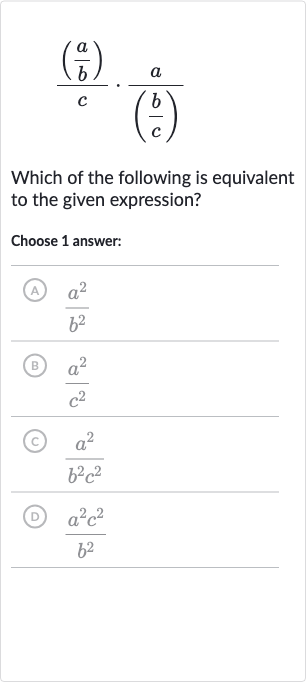Full solution
Q. Which of the following is equivalent to the given expression?Choose answer:(A) (B) (c) (D)
- Multiply by reciprocal: Simplify the given expression by multiplying the numerator and denominator by the reciprocal of the denominator.The given expression is: We can rewrite this as:
- Cancel out common factors: Simplify the expression by canceling out common factors.The in the numerator and the in the denominator cancel each other out, as do the in the numerator and the in the denominator.This leaves us with:
- Use exponents: Rewrite the simplified expression using exponents.The expression can be written as:
- Match with answer choices: Match the simplified expression with the given answer choices.The expression corresponds to answer choice (A).
More problems from Compare linear and exponential growth
QuestionGet tutor help
QuestionGet tutor help
QuestionGet tutor help
QuestionGet tutor help
QuestionGet tutor help
QuestionGet tutor help
QuestionGet tutor help

